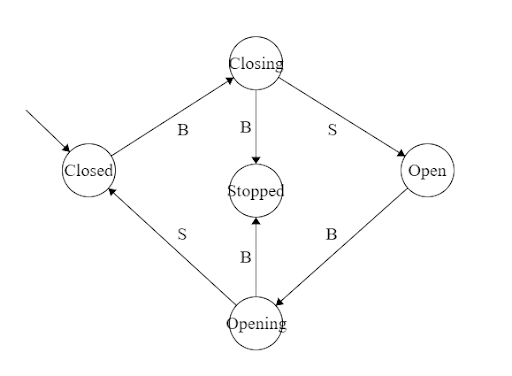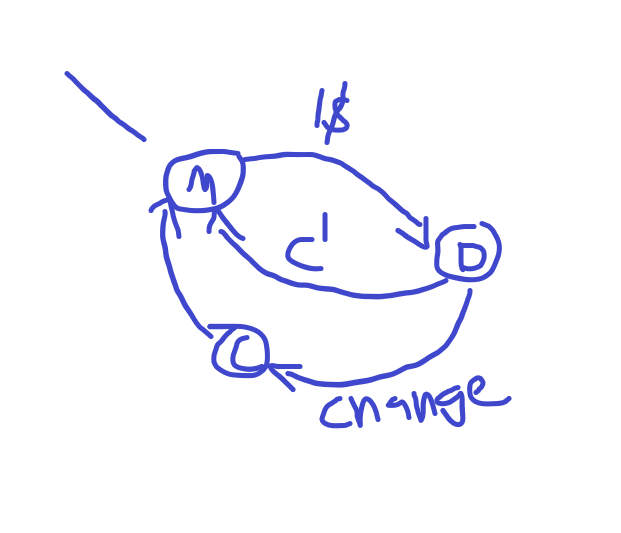This week I completed two simple finite state machine tasks - involving visualizing them on paper, and coding them in python. The finite state machines were a garage door, and a vending machine. Finite state machines on paper are a good way to visualize an object that simplifies understanding what you need to code. Additionally, finite state machines on paper can be easily converted to code.

The garage door involved modifying a pre-existing finite state machine with 4 states, to change from the closing, or opening state to closed or open after 5 seconds, and to add the stopped state. I incorrectly read the task and ended up using time.time to literally make a timer running paralel with the code, but the task simply asked to activate the sensor 5 times - assuming that each loop of the code is one second. The stopped state was simple to add, which was a testiment to the diagram. They are more useful than they seem. The code can be found below:
import time
# set initial state
# door is closed
door = "closed"
print("Door is", door)
# repeat forever
while True:
# ask user for input
instruction = input("User input: ")
# transition to opening state
if instruction == "b" and door == "closed":
door = "opening"
start = time.time()
# transition to open state
elif instruction == "s" and door == "opening":
door = "open"
elif instruction == 'b' and door == "closing":
door = "opening"
start = time.time()
elif instruction == 'b' and door == "opening":
door = "stopped"
elif instruction == "b" and door == "stopped":
door = "closing"
start = time.time()
# transition to closing state
elif instruction == "b" and door == "open":
door = "closing"
start = time.time()
# transition to closed state
elif instruction == "s" and door == "closing":
door = "closed"
# print the current state of the door
if (time.time() - start) >= 5:
if door == "closing":
door = "closed"
if door == "opening":
door = "open"
start = 0
print("Door is", door)The vending machine was a very simple task. It prompted the user for money until there was enough to buy a coke for one dollar. The diagram was similarly simple:

The only challenge I ran into with this code was float addition and subtraction. Even if the float is a whole number, the result of the float minus one is something like 1.999999999. I used the decimal module, which did not have the same issue and the code worked fine. It can be found below:
import decimal
money = 0
while True:
inserted = decimal.Decimal(input("Dispense Money: (0.10,0.20,0.50,1,2)"))
if inserted > 2:
inserted = decimal.Decimal("0."+str(inserted))
money += inserted
if money >= 1:
print("A drink was dispensed")
if money - 1 > 0:
print("You got", str(money - 1) + "$ back!")
money = 0 